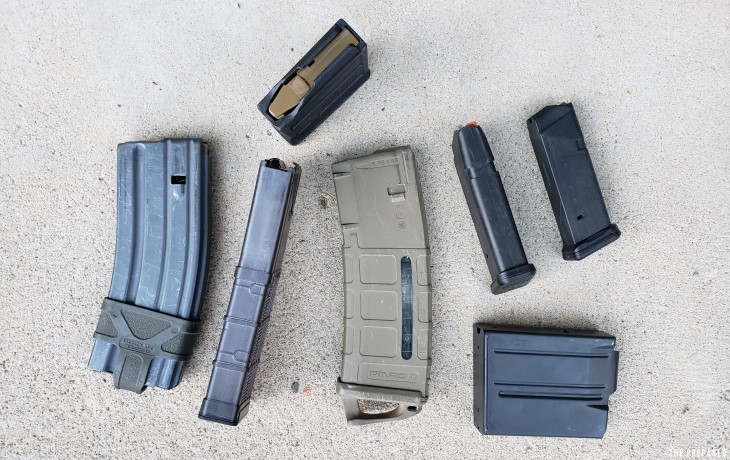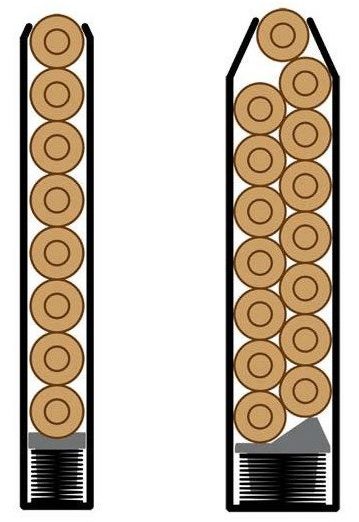Most important points:
- “Factory” magazines that come from the same people who made your firearm are usually the best choice. Look at their website or Google “(maker) (model) magazine” (eg. Glock 19 magazine).
- Magazine size is one of the areas politicians like to legislate. Google “(your state/city) magazine laws.” In California, for example, you’re not allowed to have a detachable magazine that can hold more than 10 rounds, and if you try to order them online and ship to a CA address, the vendor will block the sale.
- Laws aside, the sweet spot for most people are 30-round magazines for rifles, 10-15 rounds for pistols, and at least 5 rounds for shotguns. Hunting-oriented firearms usually have/need less capacity than those meant for self defense.
- Pistol magazines are generally metal. Within the world of rifles like the AR-15, most people prefer lighter polymer / plastic magazines over the more military-standard-issue metal style.
- Magazines benefit from cleaning and maintenance, just like your firearm. Common shooting problems such as a “failure to feed” are often caused by dirty or worn-out mags.
- Magazine springs wear out from the action of compressing and releasing — not when sitting still. So you can store loaded magazines and not worry about the spring wearing out during storage.
- Since one of the common wear parts is the feed lips (the area of the magazine that holds the top/first bullet), a worthwhile upgrade is metal feed lips (on otherwise-plastic magazines.)
- The firearms industry is increasingly using standard magazines for multiple firearm systems. This can include STANAG standard magazines which are used in the AR-15 family and AICS style magazines which are commonly used on bolt action rifles. Companies are also using Glock style magazines for rifles, and carbine rifles which shoot pistol calibers.
More: Total beginner’s guide to guns and the best first gun for preppers
Besides buying more of the “official” magazines from the company who made your gun, these are top third-party choices in common platforms:
AR-15 / STANAG-style magazines
Bolt-action AICS-style magazines
Glock pistol magazines
1911 pistol magazines
Be prepared. Don’t be a victim.
Want more great content and giveaways? Sign up for The Prepared’s free newsletter and get the best prepping content straight to your inbox. 1-2 emails a month, 0% spam.
Types of magazines: fixed vs. detachable
Fixed magazines are more integrated into the firearm than detachable mags. Fixed mags are considered semi-permanent because you wouldn’t easily swap them in the field during shooting — you’d only really take out the mag for maintenance.
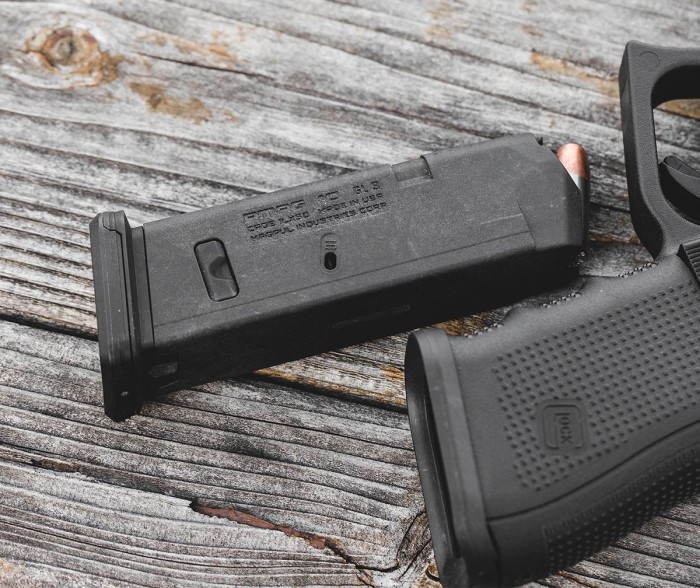
Most prepping-related firearms use detachable mags because they almost always have more capacity than firearms with fixed mags. It’s easy to carry extra detachable mags in your armor plate carrier, for instance, so that you can rapidly reload in a fight.

The tube underneath the barrel of a shotgun is a fixed magazine. You can strip it apart to clean it, and many people upgrade it to a longer “tube” to hold more shells for defense (rather than hunting).

Bolt action rifles have traditionally fed from a blind magazine, which is a box magazine hidden inside the stock of the rifle. Some bolt action rifles feature a hinge or latch on the trigger guard area that allows an end-user to quickly unload the magazine. Blind and fixed magazines keep the rifle “slick” and mitigate snags while creeping through the woods in pursuit of game. Note that detachable box-style magazines are becoming increasingly common on bolt action rifles.
What about clips?
Most of the time when people say “clip,” they actually mean magazine.
A clip and a magazine both hold ammunition. But a clip is not encased in a tube or a box. Clips are used to feed ammunition into a fixed magazine through the top of the firearm receiver. They were commonly used to quickly load World War II-era firearms.
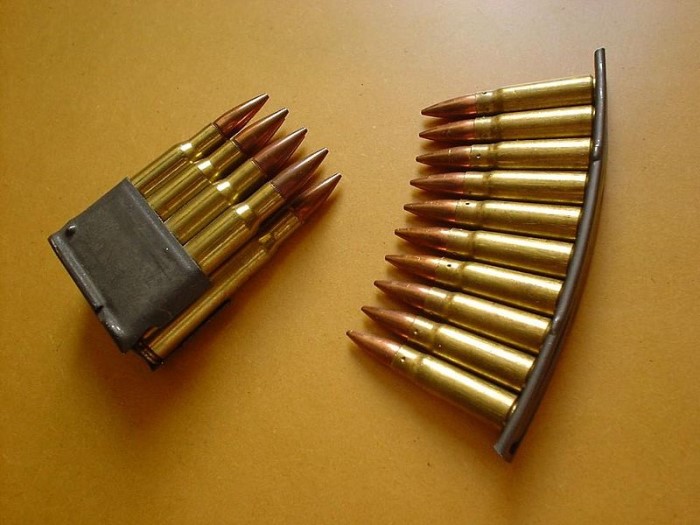
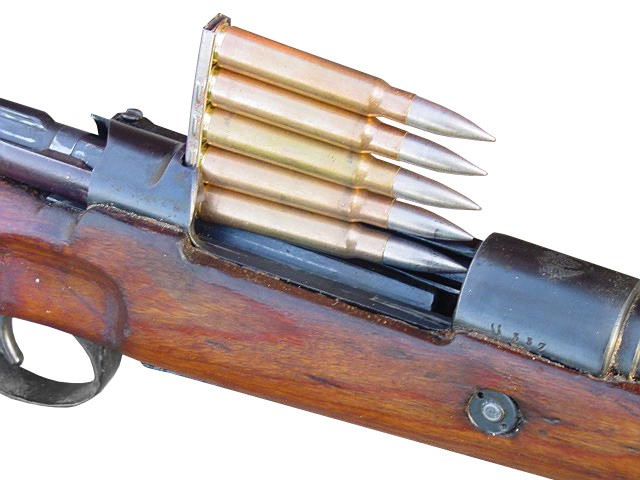
Clips, like stripper clips, can be used to rapidly load detachable magazines such as those used in the AR-15 family of rifles.
Single vs. double stack
Some firearms can take a double stack magazine, where more ammo is crunched into the same height at the expense of a wider mag.
It’s just a personal preference. Single stacks are thinner and easier to conceal. Double stacks give you more shots before reloading, which might make the difference in a fire fight. It used to be the case that single stacks were more reliable, but things have improved enough to where they’re equal.
Magazine laws
Political debates aside, one of the ways anti-gun people have restricted gun rights is by limiting the capacity of magazines. The most common model in the US is to prohibit popular 15- and 30-round magazines by limiting the capacity to 10.
Most restrictions are focused on detachable mags since anti-gun people believe that 3 magazines of 10 rounds is “safer” than 1 magazine of 30 rounds.
Google “(your state) magazine laws” to find specifics. A growing number of cities are making their own restrictions too, so you may want to search for local laws too.
Note that many of these laws are still being challenged. For example, in 2020 a federal court found that California’s laws were unconstitutional. But, as of this writing, nothing is really settled yet across the patchwork of state-level cases, and things will likely end up at the US Supreme Court in the next few years.
“Bullet buttons”, pinned mags, and other legal workarounds
One of the flaws of crafting laws around the tools criminals (and innocent people) use, rather than the criminals themselves, is that technology is always changing and it’s hard to create legal definitions around what’s good and bad.
Since many laws focus on detachable magazines, for example, the community has responded by finding ways to turn detachable mags into fixed mags. Once a firearm/magazine is considered fixed, many of the restrictions no longer apply.
This usually means changing the release mechanism so that instead of dropping the mag with a simple push of a finger, you have to use some form of “tool”, which theoretically takes more time to reload. The most popular example is the Bullet Button, where you use the tip of a bullet to press the button instead of your finger. Some people will even make or modify something like a thimble that goes on the tip of your finger so you can still press and release the mag like normal, but with a “tool” technically in-between.

Another option is to “pin” the magazine in place. Instead of releasing the mag to reload it, the mag stays in place and you reload it by pushing ammo down through the receiver (holes above the magazine).
Some manufacturers will modify the magazine itself from the factory, putting a kind of false floor or other limitation inside the mag, reducing the normal capacity down to whatever’s legal in that area.
Maintenance tips
Magazines, whether fixed or detachable, will build up oil and dirt from normal use. Small flecks of brass and carbon fouling can also accumulate inside of a magazine via blowback from the firearm shooting.
Mags are easy to take apart, clean, and put back together. It’s often as simple as pressing in a retention button on the bottom and sliding off the baseplate. The spring and “follower” (the plastic shelf that sits between the spring and ammo) should just come right out.
You’ll then use a brush, cleaning rod, and/or cloth to simply clean off all the areas.
Don’t oil the inside of the mag, since that oil will just act as a trap for dirt and carbon.
If you have a bolt action rifle with a blind or fixed magazine, you may need to completely disassemble the firearm to access the internal box and spring. Consult your owner’s manual or Google.
Example of a Glock magazine teardown:
Tip: Keep your banged-up “training” mags separate
In an actual life-and-death scenario, you obviously want to lower the chances of equipment failure. Since magazines nearing the end of their life can cause consistency problems, it’s wise to use fresher mags in your everyday-carry firearm or any other context where a fight might happen.
Don’t buy a new mag and avoid using it to keep it ‘fresh’, though. Part of being a sane prepper is always testing gear before you rely on it — and that includes mags. The mag might not be a great fit with your firearm, for example. You’d set aside a ‘primary’ mag only after you’ve used it enough to know it’s solid and works with your firearm.
Many people then use the First In First Out method to continually refresh and rotate through mags. For example, many professionals will mark a magazine with a small dot every time it malfunctions. Three dots and the magazine gets relegated to the training pile.
A good way to extend the life of your mags while training is to avoid dropping them on hard ground. For example, a great hack at home is to do dry-firing exercises over carpet or a laundry bin — that way the mag has a soft landing as it drops out during reloading drills.
Factory fitment, standards, and incompatibility
There are technical standards that are supposed to make things interchangeable within the same ‘platform’ — similar to how any company can make a USB plug and they all work together.
Reality tends not to work out as well as the USB example, though. It’s not unheard of to buy an AR-15 mag that doesn’t quite click well with your AR-15, for example. A common problem is the mag not ‘seating’ fully or easily as you try to push it into the firearm.
It’s hard to know ahead of time what will work best for you. That’s why some people buy one each of a variety of mag brands, test, then buy more of the model that worked the best.
That’s why experts generally recommend ‘factory’ mags as the safest option. Engineers will design the magazine and the firearm at the same time — particularly for more modern/technical models like the Sig 365, where people wonder “how did they get so many bullets into that small package?” The prototypes will undergo thousands of rounds of tests before being released to the public.
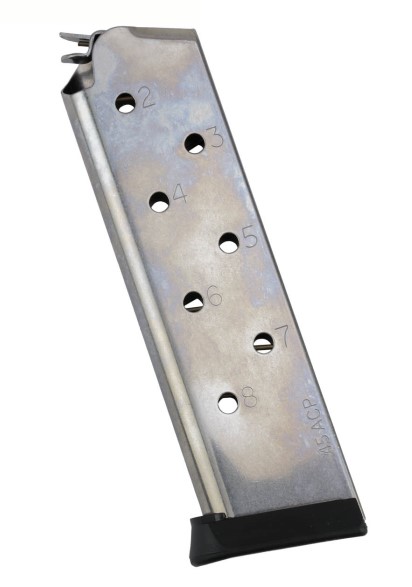
The more common the platform — such as AR-15s and Glock or 1911 pistols — the safer it usually is to buy third-party mags because the designs are so common and battle-tested that it’s hard to screw them up.
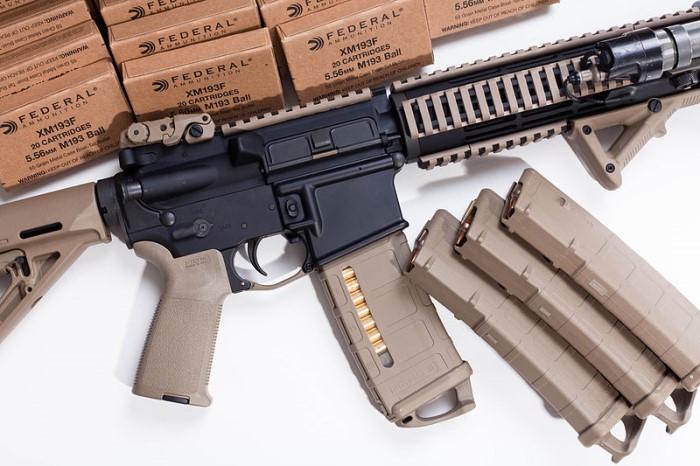
You might run across the STANAG standard. It’s essentially an AR-15 magazine. Even though the AR was designed in America, since many of America’s NATO allies use the same ammunition (5.56), they wanted to use the same magazine design across as many NATO service rifles as possible. Examples of non-ARs using the same STANAG design standard include the Bushmaster ACR, SIG MCX, FN SCAR light, and Sig 556.
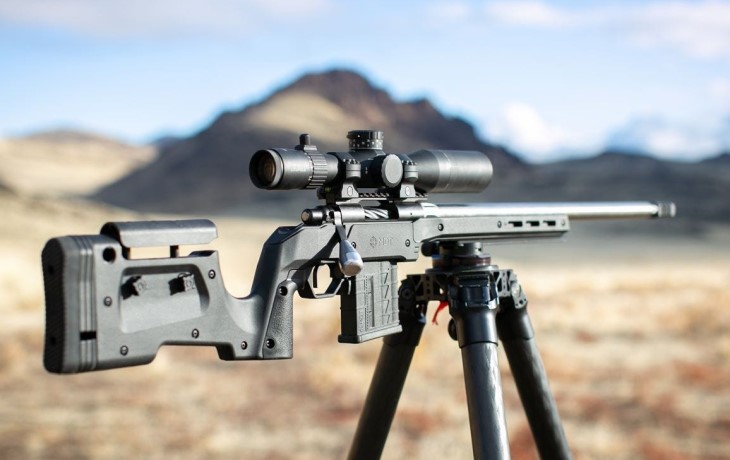
About 20 years ago, consumers started asking for detachable magazines for bolt action rifles. A lot of companies came out with decent products, but Accuracy International came out with the AICS magazine that eventually became the industry standard. Accuracy International designed several magazine sizes to accommodate different firearm actions and calibers. The most common being for short action calibers like the .308 Winchester and 6.5 Creedmoor.
